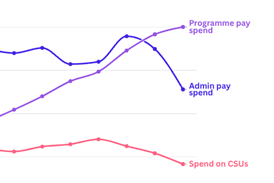In the face of unprecedented challenges, supply chains emphasise resilience through standardised operations, technology-driven transparency, collaborative ecosystems, and sustained long-term planning for enduring disruptions
Supply chains have demonstrated remarkable resilience and adaptability in recent years in response to a range of disruptions and challenges. As healthcare and pharmaceutical supply chains continue to evolve in the face of changing pressures and demand, it’s critical to maintain this agility and resilience.
Sponsored by
The covid-19 pandemic created an unprecedented challenge for supply chains. With global transport disrupted, workplaces upended, and daily lives fundamentally altered, supply chains were pushed to their very limits. Transport delays, Brexit complications, and surging demand for vaccines further challenged supply chain responsiveness. However, important lessons have emerged from this crisis about building resilience to withstand future shocks.
Lesson 1: Create risk management frameworks and contingency plans
According to Professor Martin Christopher of Cranfield School of Management, resilience requires supply chains to mobilise quickly to meet evolving customer needs and challenges. Standardised ways of working enabled DHL Supply Chain to respond nimbly at the onset of the crisis, simultaneously invoking continuity plans across 400 sites globally. And resilience isn’t just about returning to the status quo – it’s about actively improving by applying learnings.
Lesson 2: Enable supply chain transparency through technology
Professor Richard Wilding emphasised the need for continuous monitoring and intelligence gathering across operations. DHL’s digital twin provided complete operational visibility to facilitate quicker, more agile decisions in response to pandemic-driven demand shifts. Emerging technologies like AI and control towers now enable unprecedented transparency – crucial for identifying and focusing on the most urgent customer needs.
Lesson 3: Collaborate across the supply chain ecosystem
As Professor Christopher described, supply chains function as interconnected ecosystems. Building resilience involves proactively nurturing relationships across this ecosystem to ensure access to needed capabilities. The rapid rollout of the NHS covid vaccine in the UK exemplified this power of collaboration across industry stakeholders, government, and partners. DHL’s role in the Ventilator Challenge UK consortium also demonstrated the potential of pooling cross-industry expertise.
Lesson 4: Maintain energy and plan for the long-term marathon
Finally, resilience requires sustaining momentum, energy, and focus across extended periods of disruption. DHL accelerated rollout of its employee Connect App for improved communication, provided family support packages, and continued traditional employee outreach programs. But building future resilience also means proactively developing talent and expanding skillsets across the sector. DHL continues hiring, training, and investing in its people – particularly critical as young people face an uncertain future job landscape.
The pandemic has underscored the growing importance of supply chain visibility, collaboration, and long-range planning to withstand disruptions. By implementing standardised ways of working, digitising operations, instituting robust risk management practices, and focusing on people, supply chains can build the resilience needed to navigate an uncertain future with agility.
To keep up to date with the latest supply chain insights, subscribe here.


























